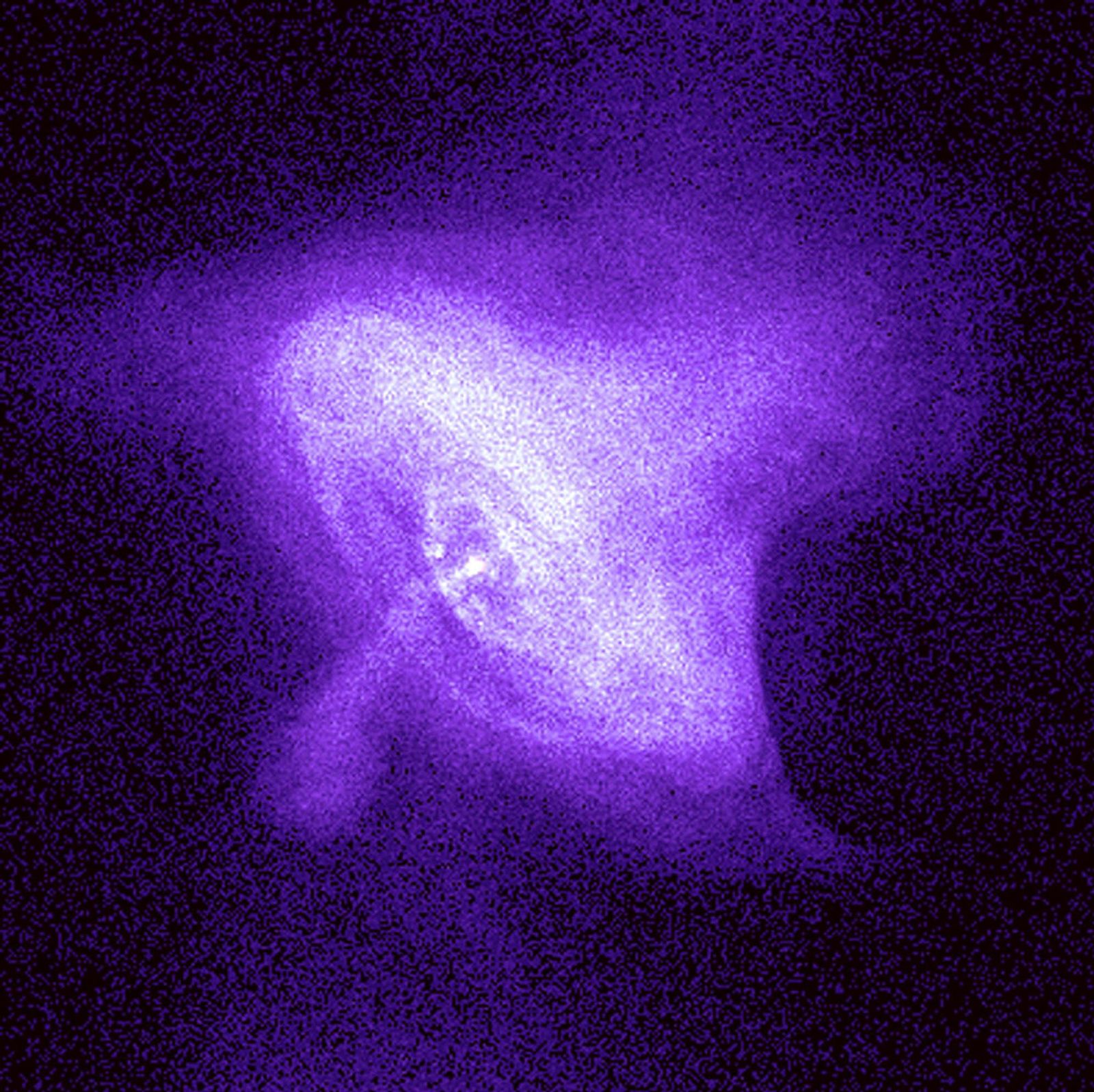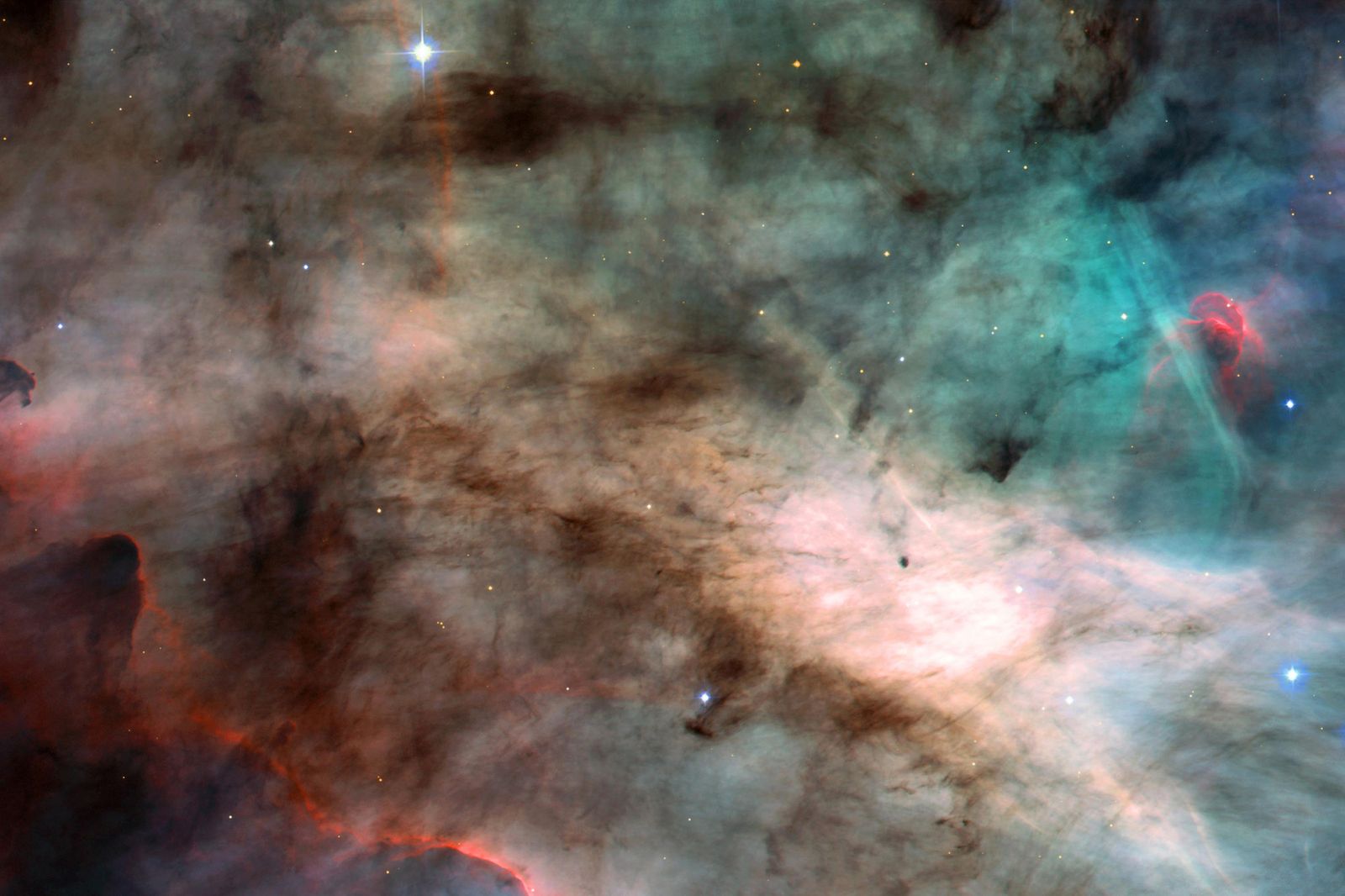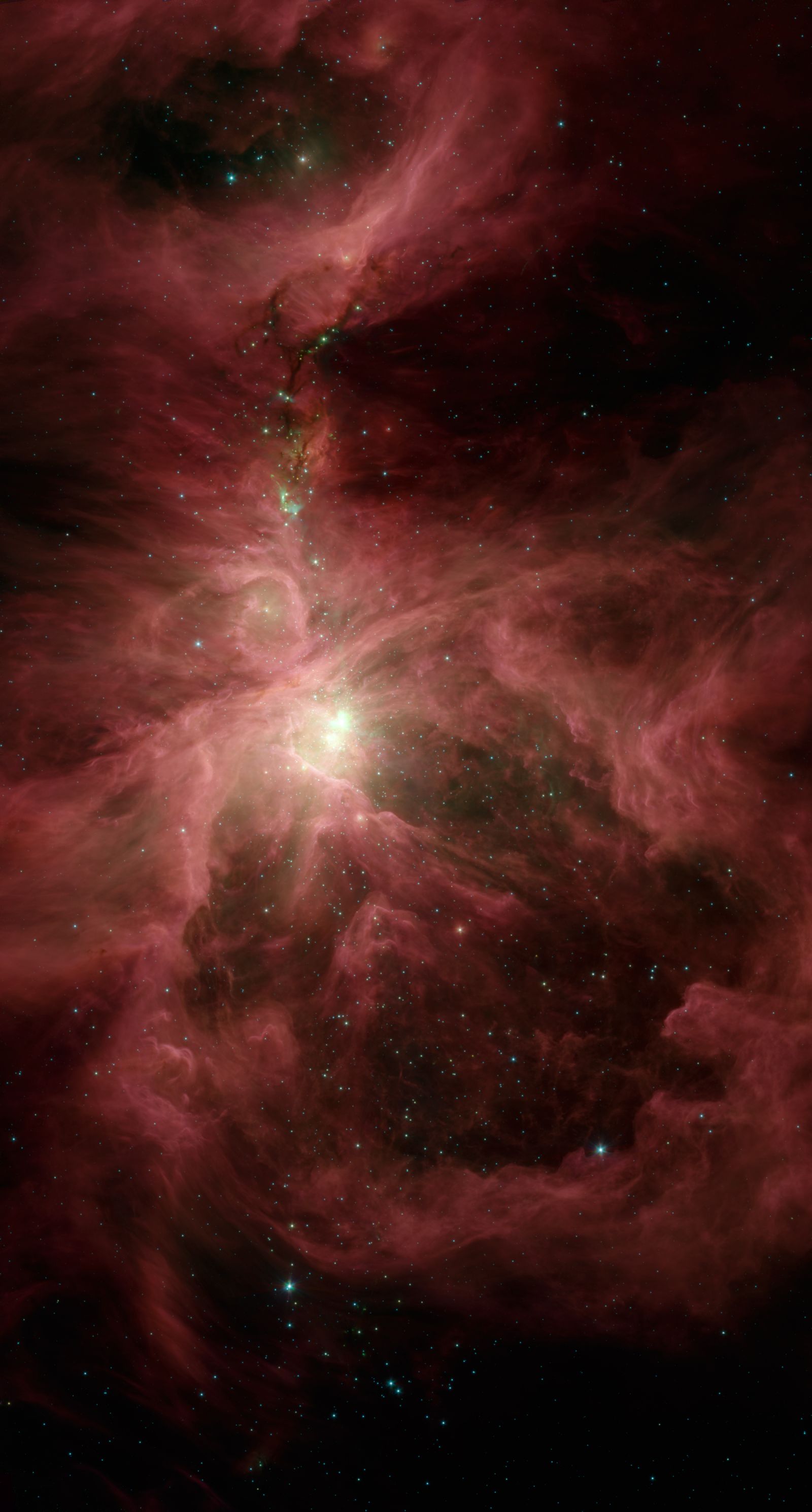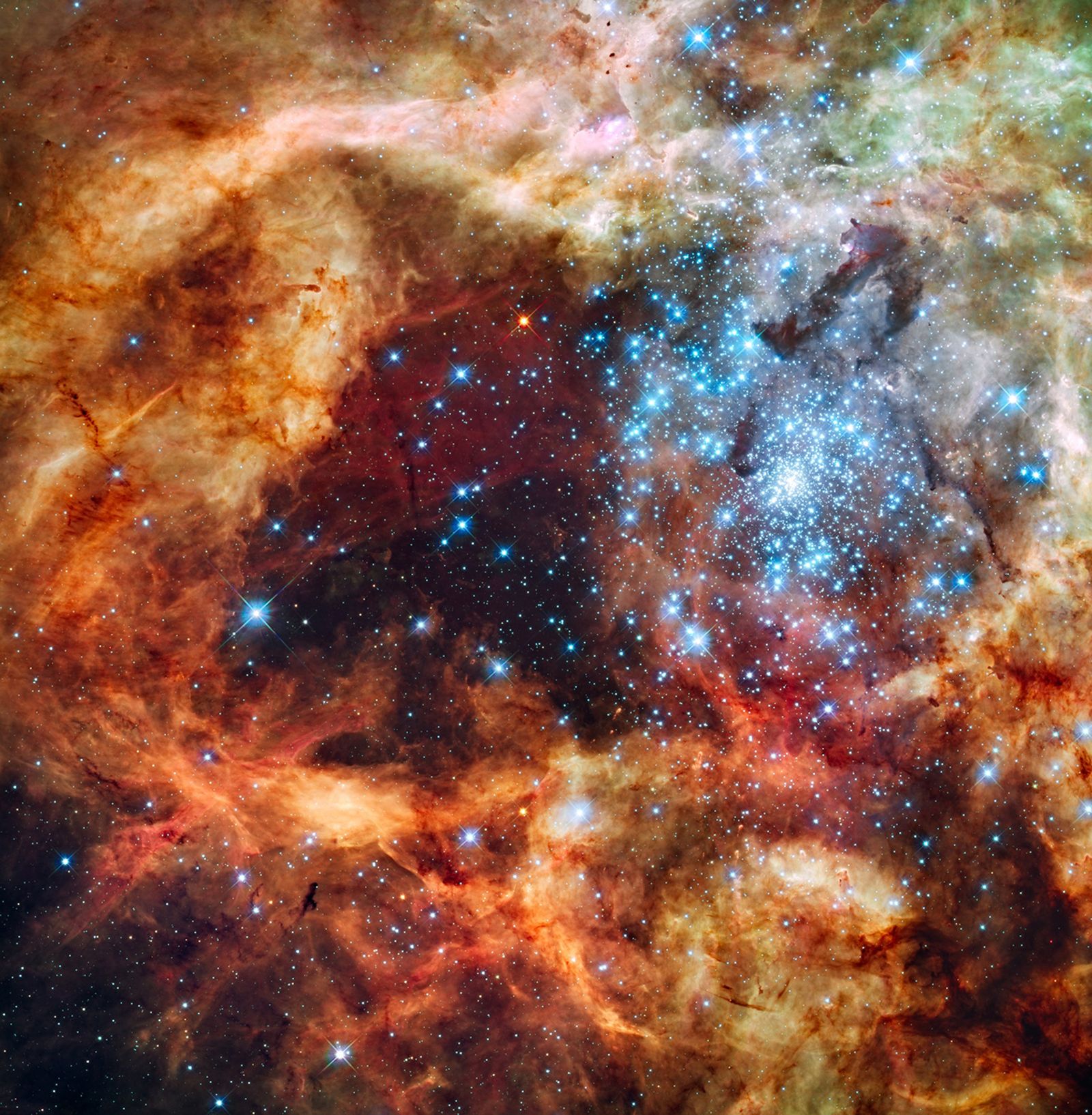
Nebula: NASA photos
Over the years NASA has released various photos of Nebulae, clouds of gas and dust where stars are formed. Many of the photos were taken with NASA’s Hubble Space Telescope.
Section:Picture story

This photo released by NASA Nov. 2, 1995, was taken by the Hubble Space Telescope April 1, 1995. It shows dark pillar-like structures that are actually columns of cool interstellar hydrogen gas and dust that are also incubators of new stars in the Eagle Nebula.
NASA Associated Press

Interstellar “twisters” appear in the hourglass region of the Lagoon Nebula, 5,000 light years from earth in the region of the constellation Sagittarius in this Hubble Space Telescope image released by NASA Jan. 22, 1997. The bright light at lower right in the image is the central hot star O Herschel 36. This is a color coded image from combined exposures taken in July and Sept. 1995 through three narrow band filters. The region is studied by astronomers to learn more about the birth of stars and the interaction between stellar winds and nearby gas.
NASA, JPL Associated Press

This is a NASA handout released Tuesday, Sept. 28, 1999, showing a never-before-seen ring of X-rays surrounding the heart of the massive crab nebula in space. The X-rays were revealed by the 2-month-old Chandra X-ray observatory and may provide clues as to how a powerful neutron star provides energy to the nebula, NASA researchers said.
NASA Associated Press

The nebula called the “Red Rectangle,” one of the most unusual celestial bodies in the galaxy, is shown in this image created from observations by NASA’s Hubble Space Telescope taken on March 17-18,1999, and was released Tuesday, May 11, 2004. The detail from the Hubble image shows the twin stars at the nebula’s core ejecting cone-like streams of gas and dust outward in opposing directions, producing a distinctive rung-like pattern. Astronomers know of no other nebula like it in the universe.
NASA, Ho Associated Press

A watercolor fantasyland? No. It’s actually an image of the center of the Omega Nebula, a hotbed of newly born stars wrapped in colorful blankets of glowing gas and cradled in an enormous cold, dark hydrogen cloud. This stunning picture was taken April 1 and 2, 2002 by the Advanced Camera for Surveys aboard NASA’s Hubble Space Telescope. The region of the nebula shown in this photograph is about 3,500 times wider than our solar system. The nebula, also called M17 and the Swan Nebula, resides 5,500 light-years away in the constellation Sagittarius.
NASA Associated Press

Resembling a nightmarish beast rearing its head from a crimson sea, this monstrous object is actually an innocuous pillar of gas and dust. Called the Cone Nebula (NGC 2264) because in ground-based images it has a conical shape, this giant pillar resides in a turbulent star-forming region. This picture, taken April 2, 2002, by the newly installed Advanced Camera for Surveys (ACS) aboard NASA’s Hubble Space Telescope, shows the upper 2.5 light-years of the nebula, a height that equals 23 million round trips to the Moon. The entire nebula is 7 light-years long. The Cone Nebula resides 2,500 light-years away in the constellation Monoceros.
NASA Associated Press

This image taken by NASA’s Hubble Space telescope, and released Thursday Aug. 12, 2004, shows nebula N44F, which, at left, is being inflated by a stellar wind, creating an interstellar bubble. The bubble forms when an extremely hot star is surrounded by a cloud of cooler gas, and the stellar wind emitting from the star pushes the gas, causing a bubble to form.
NASA, ESA Associated Press

This is an image originally released on Dec. 22, 2005 by NASA/JPL showing the first glimpse of newborn stars clustered geometrically in a newly formed nebula - a cloud of gas and dust where stars are formed. Scientists at the University of Arizona’s Steward Observatory said the stars are less than 100,000 years old. The image was made using information from two telescopes aboard the Spitzer Space Telescope.
NASA/JPL-Caltech/P.S. Teixeira - Center for Astrophysics Associated Press
NASA, ESA and Jeff Hester )\ Associated Press

A photo provided by NASA shows a new image from NASA’s Spitzer Space Telescope that probes deep into the clouds of dust that permeate theOrion nebula. The image shows infrared light captured by Spitzer’s infrared array camera. Nasa says The striking false-color picture shows pinkish swirls of dust speckled with stars, some of which are orbited by disks of planet-forming dust.
NASA, HO Associated Press
NASA-ESA Associated Press

This image provided by NASA’s Hubble Space Telescope, Tuesday Dec. 15, 2009, shows hundreds of brilliant blue stars wreathed by warm, glowing clouds. The festive portrait is the most detailed view of the largest stellar nursery in our local galactic neighborhood. The massive, young stellar grouping, called R136, is only a few million years old and resides in the 30 Doradus Nebula, a turbulent star-birth region in the Large Magellanic Cloud (LMC), a satellite galaxy of our Milky Way. There is no known star-forming region in our galaxy as large or as prolific as 30 Doradus.
NASA Associated Press

This undated image released by NASA shows NASA’s Wide-field Infrared Survey Explorer, (WISE) captured picture of the hunter’s “head” (fuzzy red star in center). The picture shows a giant nebula around the star Orion’s head. The first batch of data from a NASA mission to map the entire sky has been released to scientists and anyone with an Internet connection. The catalog made public this week includes millions of galaxies, stars, asteroids and other celestial objects.
NASA Associated Press